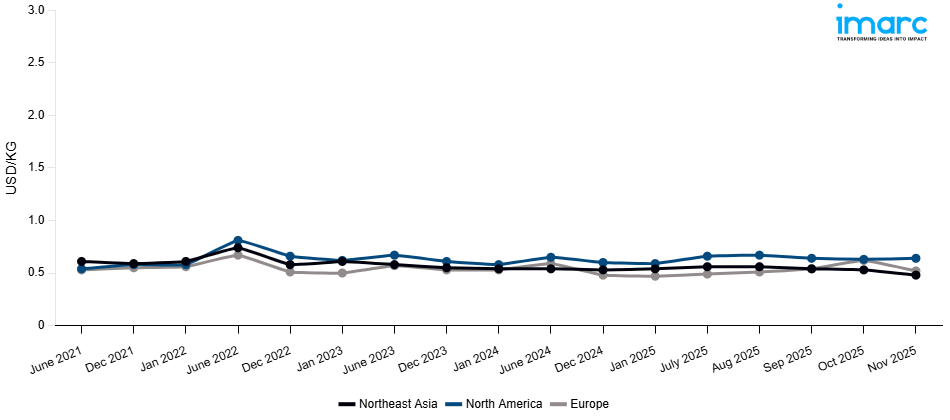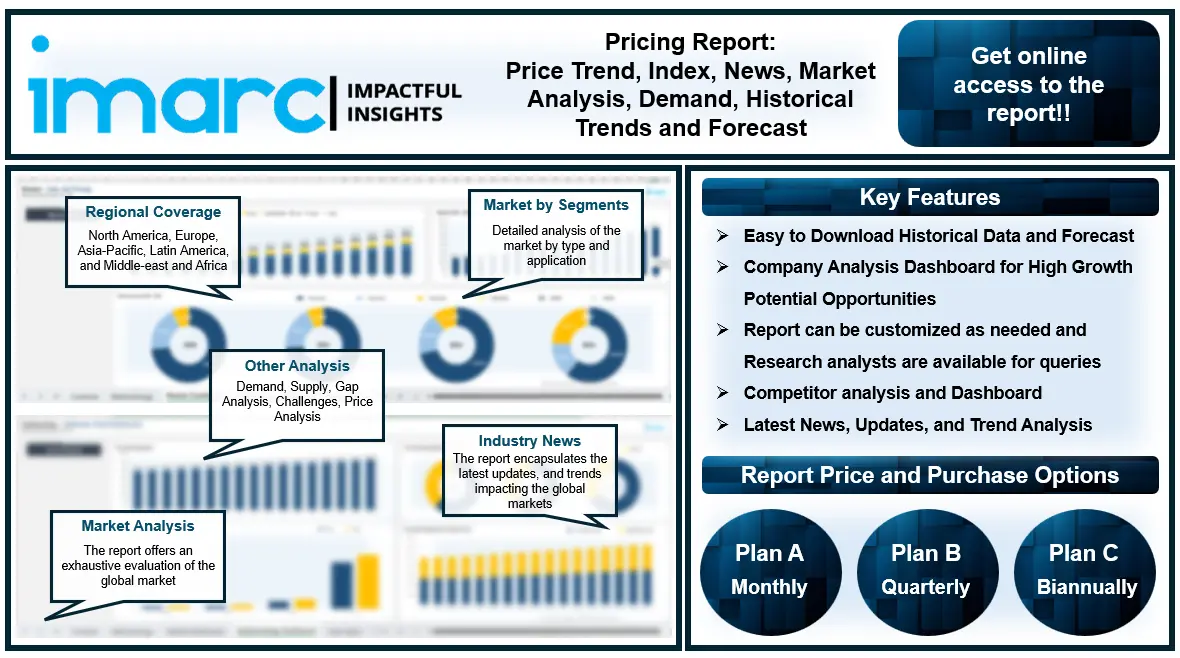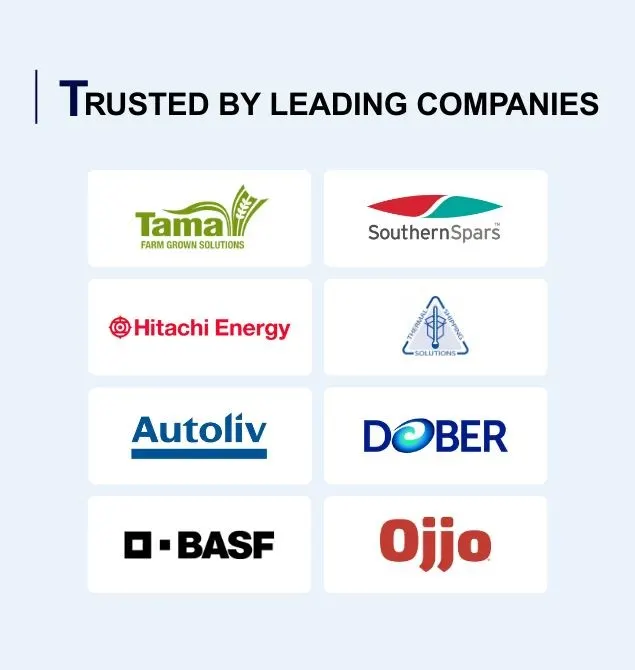
Asphalt Prices, Trend, Chart, Demand, Market Analysis, News, Historical and Forecast Data Report 2025 Edition
Asphalt Price Trend, Index and Forecast
Track real-time and historical asphalt prices across global regions. Updated monthly with market insights, drivers, and forecasts
Asphalt Prices November 2025
| Region | Price (USD/KG) | Latest Movement |
|---|---|---|
| Northeast Asia | 0.48 | -8.8% ↓ Down |
| Europe | 0.52 | -16.2% ↓ Down |
| North America | 0.64 | 0.6% ↑ Up |
Asphalt Price Index (USD/KG):
The chart below highlights monthly asphalt prices across different regions.

Get Access to Monthly/Quaterly/Yearly Prices, Request Sample
Market Overview Q3 Ending September 2025
Northeast Asia: In Northeast Asia, asphalt prices declined as reduced construction activity and weaker infrastructure spending curbed demand. Oversupply from steady refinery output weighed further on market sentiment, pushing the asphalt price index lower. Seasonal weather disruptions also delayed paving projects, compounding sluggish procurement. Although crude oil feedstock availability remained stable, limited export opportunities and cautious buying trends reinforced downward price pressure across regional markets.
Europe: In Europe, asphalt prices increased as robust demand from road construction and infrastructure upgrades drove stronger consumption. Government-funded highway and urban development projects supported procurement activity, lifting the asphalt price index. Supply constraints from refinery maintenance further tightened availability, while steady demand from the roofing and industrial sectors provided additional momentum. Competitive dynamics from imports remained limited, allowing regional producers to maintain pricing strength.
North America: In North America, asphalt prices declined as subdued demand from the construction and roofing sectors reduced procurement volumes. The asphalt price index reflected this downward movement, with stable refinery production adding to supply-side pressure. Seasonal slowdowns in paving projects, coupled with muted industrial consumption, contributed to bearish sentiment. Import competition also created headwinds, further limiting domestic producers’ ability to sustain higher pricing levels.
Asphalt Price Trend, Market Analysis, and News
IMARC's latest publication, “Asphalt Prices, Trend, Chart, Demand, Market Analysis, News, Historical and Forecast Data Report 2025 Edition,” presents a detailed examination of the asphalt market, providing insights into both global and regional trends that are shaping prices. This report delves into the spot price of asphalt at major ports and analyzes the composition of prices, including FOB and CIF terms. It also presents detailed asphalt prices trend analysis by region, covering North America, Europe, Asia Pacific, Latin America, and Middle East and Africa. The factors affecting asphalt pricing, such as the dynamics of supply and demand, geopolitical influences, and sector-specific developments, are thoroughly explored. This comprehensive report helps stakeholders stay informed with the latest market news, regulatory updates, and technological progress, facilitating informed strategic decision-making and forecasting.

Asphalt Industry Analysis
The global asphalt industry size reached USD 271.80 Million in 2025. By 2034, IMARC Group expects the market to reach USD 409.34 Million, at a projected CAGR of 4.66% during 2026-2034. Market expansion is driven by increasing infrastructure investments, rising demand for road construction and maintenance, and the growing use of asphalt in roofing and waterproofing applications. Emerging economies are contributing to demand growth through urbanization, while technological improvements in modified asphalt formulations support longer-lasting infrastructure projects.
Latest developments in the asphalt industry:
- August 2025: Holbrook Asphalt acquired Advanced Paving & Construction, a contractor based in Ogden, Utah, engaged in public and private projects. The acquisition strengthens Holbrook Asphalt’s service capabilities and geographic reach in infrastructure.
- May 2024: Exxon Mobil Corporation completed its acquisition of Pioneer Natural Resources, significantly expanding its Permian Basin footprint and doubling its production capacity there.
- August 2023: AGGREGATE Industries acquired OCL Regeneration Ltd to strengthen AI’s asphalt and surfacing operations, where it is a key player on National Highways and local authority contracts.
Product Description
Asphalt, also known as bitumen, is a viscous, black, petroleum-derived material obtained from crude oil refining or natural deposits. It is composed primarily of hydrocarbons, with high adhesive and waterproofing properties. Asphalt is most widely used in road construction, where it serves as a binder mixed with aggregates to produce asphalt concrete for highways, runways, and pavements. Beyond transportation infrastructure, asphalt finds applications in roofing materials, waterproofing membranes, and industrial coatings. Its durability, weather resistance, and cost-effectiveness make it a key construction material. Modified asphalt, enhanced with polymers or additives, provides improved performance, extending the life of infrastructure and reducing maintenance needs.
Report Coverage
| Key Attributes | Details |
|---|---|
| Product Name | Asphalt |
| Report Features | Exploration of Historical Trends and Market Outlook, Industry Demand, Industry Supply, Gap Analysis, Challenges, Price Analysis, and Segment-Wise Assessment. |
| Currency/Units | US$ (Data can also be provided in local currency) or Metric Tons |
| Region/Countries Covered | The current coverage includes analysis at the global and regional levels only. Based on your requirements, we can also customize the report and provide specific information for the following countries: Asia Pacific: China, India, Indonesia, Pakistan, Bangladesh, Japan, Philippines, Vietnam, Thailand, South Korea, Malaysia, Nepal, Taiwan, Sri Lanka, Hongkong, Singapore, Australia, and New Zealand* Europe: Germany, France, United Kingdom, Italy, Spain, Russia, Turkey, Netherlands, Poland, Sweden, Belgium, Austria, Ireland, Switzerland, Norway, Denmark, Romania, Finland, Czech Republic, Portugal and Greece* North America: United States and Canada Latin America: Brazil, Mexico, Argentina, Columbia, Chile, Ecuador, and Peru* Middle East & Africa: Saudi Arabia, UAE, Israel, Iran, South Africa, Nigeria, Oman, Kuwait, Qatar, Iraq, Egypt, Algeria, and Morocco* *The list of countries presented is not exhaustive. Information on additional countries can be provided if required by the client. |
| Information Covered for Key Suppliers |
|
| Customization Scope | The report can be customized as per the requirements of the customer |
| Report Price and Purchase Option |
Plan A: Monthly Updates - Annual Subscription
Plan B: Quarterly Updates - Annual Subscription
Plan C: Biannually Updates - Annual Subscription
|
| Post-Sale Analyst Support | 360-degree analyst support after report delivery |
| Delivery Format | PDF and Excel through email (We can also provide the editable version of the report in PPT/Word format on special request) |
Key Benefits for Stakeholders:
- IMARC’s report presents a detailed analysis of asphalt pricing, covering global and regional trends, spot prices at key ports, and a breakdown of Ex Works, FOB, and CIF prices.
- The study examines factors affecting asphalt price volatility, including raw material costs, supply-demand shifts, geopolitical impacts, and industry developments, offering insights for informed decision-making.
- The competitive landscape review equips stakeholders with crucial insights into the latest market news, regulatory changes, and technological advancements, ensuring a well-rounded, strategic overview for forecasting and planning.
- IMARC offers various subscription options, including monthly, quarterly, and biannual updates, allowing clients to stay informed with the latest market trends, ongoing developments, and comprehensive market insights, ensuring they remain at the forefront of the asphalt industry.
Key Questions Answered in This Report
The asphalt prices in November 2025 were 0.48 USD/Kg in Northeast Asia, 0.52 USD/Kg in Europe, and 0.64 USD/Kg in North America.
The asphalt prices data is updated on a monthly basis.
We provide the pricing data primarily in the form of an Excel sheet and a PDF.
Yes, our report includes a forecast for asphalt prices.
The regions covered include North America, Europe, Asia Pacific, Middle East, and Latin America. Countries can be customized based on the request (additional charges may be applicable).
Yes, we provide both FOB and CIF prices in our report.
Need more help?
- Speak to our experienced analysts for insights on the current market scenarios.
- Include additional segments and countries to customize the report as per your requirement.
- Gain an unparalleled competitive advantage in your domain by understanding how to utilize the report and positively impacting your operations and revenue.
- For further assistance, please connect with our analysts.
Why Choose Us
IMARC offers trustworthy, data-centric insights into commodity pricing and evolving market trends, enabling businesses to make well-informed decisions in areas such as procurement, strategic planning, and investments. With in-depth knowledge spanning more than 1000 commodities and a vast global presence in over 150 countries, we provide tailored, actionable intelligence designed to meet the specific needs of diverse industries and markets.
1000
+Commodities
150
+Countries Covered
3000
+Clients
20
+Industry
Robust Methodologies & Extensive Resources
IMARC delivers precise commodity pricing insights using proven methodologies and a wealth of data to support strategic decision-making.
Subscription-Based Databases
Our extensive databases provide detailed commodity pricing, import-export trade statistics, and shipment-level tracking for comprehensive market analysis.
Primary Research-Driven Insights
Through direct supplier surveys and expert interviews, we gather real-time market data to enhance pricing accuracy and trend forecasting.
Extensive Secondary Research
We analyze industry reports, trade publications, and market studies to offer tailored intelligence and actionable commodity market insights.
Trusted by 3000+ industry leaders worldwide to drive data-backed decisions. From global manufacturers to government agencies, our clients rely on us for accurate pricing, deep market intelligence, and forward-looking insights.
 Request Customization
Request Customization
 Inquire Before Buying
Inquire Before Buying
 Speak to an Analyst
Speak to an Analyst Request Brochure
Request Brochure




.webp)




.webp)












